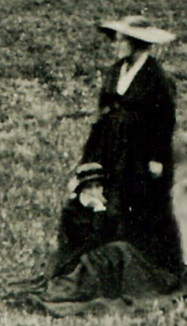
 Louisa and Abigail May Alcott, c. 1865 What I learned about Abigail May Alcott while researching Marmee & Louisa and My Heart Is Boundless has changed how I read Louisa's work and understand Louisa's life. Not only did Abigail encourage Louisa to write from an early age, but also she provided material for Louisa’s fiction. Abigail encouraged her daughter to read her private journals, which contained detailed descriptions of Abigail’s marital troubles, frustrations, and dreams. As the young author pored over voluminous descriptions of her mother’s inner life, she was composing adult novels and sensational stories about violent relationships, abusive marriages, and suicidal women struggling for equality with men. Abigail’s happy childhood, tragic marriage, and aborted career became fodder for Louisa’s vivid imagination. In Little Women and her other juvenile novels, Louisa concealed the messy, painful realities of her own childhood – poverty, marital strife, and an absent father – by incorporating into her fiction aspects of her mother’s early life. In her works for adults, in contrast, Louisa exploited the difficult truths of her own and her mother’s experiences as girls and women.
5 Comments
9/12/2020 04:05:58 am
Your thing with respect to making will be for all intents and purposes nothing hard to come by of amazing. This instructive article is unimaginably valuable and contains offered myself a superior answer for have the option to my own issues.
Reply
8/27/2021 05:07:05 am
I'm exceptionally glad to look your post very supportive. I have joined your rss channel and anticipate looking for a greater amount of your fabulous post.
Reply
9/14/2021 07:41:29 am
Hi, by using Google I found your site even as pursuing down a basically indistinguishable subject, your site came up, it looks really fascinating. I bookmarked it.
Reply
10/2/2021 03:45:26 am
Great centers you made here..Great stuff...I think you've made some truly intriguing points.Keep up the incredible work.
Reply
Leave a Reply. |
AuthorEve LaPlante is the author, most recently, of the biography Marmee & Louisa and the editor of My Heart Is Boundless. Archives
April 2021
Categories
All
|

 RSS Feed
RSS Feed